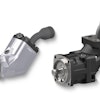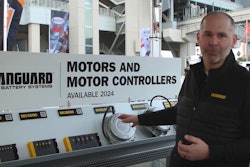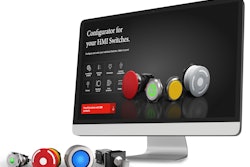
There is substantial growth forecasted for the off-highway industry in the next 10 years, but with that growth there is an increasing pressure to achieve net zero. With 29% of greenhouse gas emissions coming from transportation and 10% attributed to agriculture, the heat is on to uncover the most sustainable path forward, with an obvious focus on electrification for many industry stakeholders.
However, not all industries are working toward electrification at the same pace, or in the same way. Automotive, for example, has been leading the way, racing toward an electric future with aggressive legislation often dictating the timeline. The off-highway industry is now seeing the pressure to boost sustainability and hence reduce total cost of ownership but has a much wider array of technology options and strategies to sift through in order to identify the optimal approach in each case.
While off-highway may not be shifting as quickly as other industries, there has been a great amount of eagerness, enthusiasm and willingness to innovate and adopt electrified technologies, as well as other sustainable alternatives. Investment, along with an increased focus, have many companies looking at both small- and large-scale electric solutions, often in combination with the introduction of more autonomy to vehicle platforms.
With the release of more electric prototypes and new market-ready technologies than ever before, EV-related content is being built into traditional trade show agendas. Most recently, Agritechnica featured multiple hybrid and battery-electric tractors and electrified machinery, such as the New Holland T4 Electric Power utility tractor. The increase in solutions being showcased suggests there may be an uptick in the innovation and deployment of electric solutions soon, with a shift toward research and development (R&D) that will drive that deployment already happening.
The following are four core areas of focus in today's manufacturing environment as the industry moves toward off-highway electrification.
1. Incremental Electrification
Wholesale electrification of off-highway technology remains in the distant future.
In the near-term, we will continue to see a wide variety of incremental changes in the coming years.
The varying duty cycles, mission profiles and use cases in off-highway applications, across agriculture, construction and mining, means that sustainability in this space can mean very different things to many different people, resulting in a broad mix of approaches and technologies. There are many variables influencing how challenges are tackled, where sustainability benefits might come from and which electrified components and systems will deliver the best ROI. For this reason, there are many OEMs and Tier 1s looking at how to deploy a mix of new and existing products into the market to address the electrification and sustainability appetite of off-highway, with an associated appetite for aggressive R&D strategies to deliver them.
While many transportation sectors are all-in on tackling propulsion first, off-highway is looking beyond propulsion to auxiliary systems as well. For example, a focus on first electrifying implements via high-voltage electric power take-offs (PTOs) in agriculture vs. electrifying the overall system, and transitioning power sources for in-cabin heating and cooling. For vehicles where uptime, or time-in-field, is the most critical operating attribute, even these smaller steps will make a tremendous impact on overall efficiency.
Volvo Construction Equipment is a great example of the experimentation and pace of pushing out electrified technologies. The company has debuted several “lightly electric” technologies, including the DD25 Electric at CONEXPO in 2023, which combines electrification with existing technology like hydraulic actuation.
Companies will continue making the shift toward electrification and moving the balance between new and existing technologies on the same platforms as the maturity of electrified technology develops in the coming years, and as operators begin to realize tangible operating savings and sustainability impact.
2. Energy Recovery Tactics
Companies are focusing more on understanding their design and real-world duty cycles to maximize efficiency, packaging space and energy usage through engine downsizing and energy recovery tactics. Such downsizing, and extracting improved overall efficiency, depends upon close understanding of design guidelines and duty cycles so the blend of conventional and new power sources delivers the improvements demanded by end users.
A lot of these downsized applications are optimizing fuel consumption and, though not fully electric, are also reducing emissions through efficient hybrid systems. As for energy recovery, there are an array of opportunities depending on the application and usage, where electrification can supplement power to the wheels, or provide energy recovery through regenerative braking. For example, construction equipment like excavators can recover energy while dumping or lowering loads.
3. High Power Density Batteries
The hunt for more power dense, safer batteries is on and it’s prevalent across all transportation sectors. These are critical to high up-time in harsh, high power draw applications seen in off-highway.
This push for higher power density batteries will continue to enable electrification of the industry. In the near term, and in light of the material challenges facing the industry, we will continue to see new suppliers enter the market, battery placement be modified and new battery chemistries and processes be explored and adopted.
Alongside higher power density batteries, there is a slowly emerging standard for off-highway electrification in terms of voltage levels, with a strong desire to explore higher voltages for higher power machines being balanced by the need for system robustness and safety. Organizations like the Agricultural Industry Electronics Foundation (AEF) are helping to support standardization, and this will further enable rapid deployment of electrified technology across the industry.
4. Solving the Infrastructure Puzzle
Uptime is a huge driver for off-highway. Worrying about the need to charge a vehicle that runs more than half of the day makes the idea of a potential four-to-five hours to charge seem quite daunting. Similarly, not having charging stations available in remote areas like rural fields, is a major obstacle to wholesale electrification. However, challenging ourselves to truly understand the system and its use cases can often lead to new ideas; for example, construction vehicles like excavators often do not move very far in a day’s work, presenting the opportunity to be tethered to an energy source whilst operating. Again, a detailed understanding of the real-world use cases allows the right solution to be deployed, so that real-world benefits are delivered.
Like all sectors that are deploying electrified solutions, working to solve the infrastructure puzzle remains a top priority, and will for some time.
Steps for Further Advancement
Taking a whole-system approach to understand the greater electrified architecture needs and interactions is critical to successfully developing these systems, regardless of the application. Likewise, because of the rapid pace of innovation, combined with continually changing regulations and demand, being swift and agile while creating scalable, modular and flexible solutions is key.
While there is not one single technology that can deliver sustainability across all sectors — or within all subsets of off-highway — it’s important to consider the possibility of creating solutions with commonality and scalability in mind for OEMs.
Electrification will not be the be-all and end-all for off-highway — complementary technologies, such as hydrogen, methane and biofuels, will be an important part of the mix. Electrified systems will however play a key part in the future of off-highway, with their aggressive development meaning that most OEMs and Tier 1s are rapidly tooling up to deliver these systems and play their part in a sustainable future.
Ben Chiswick is the director of engineering business development at Drive System Design, Inc.




















